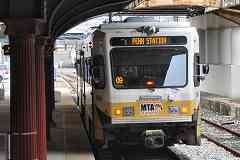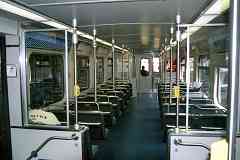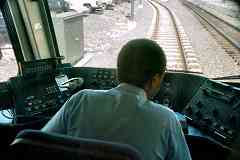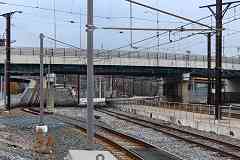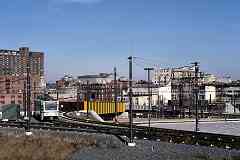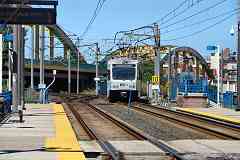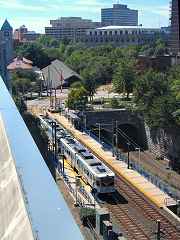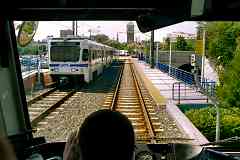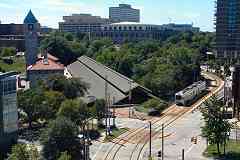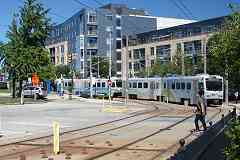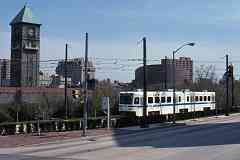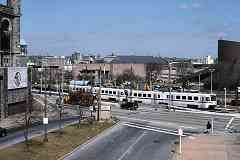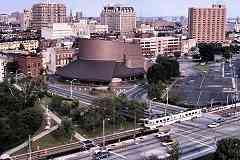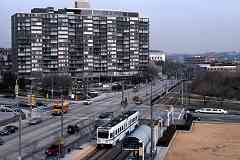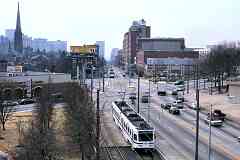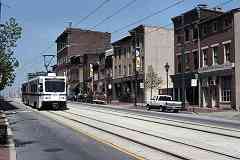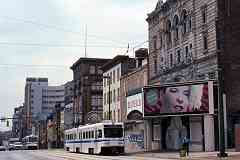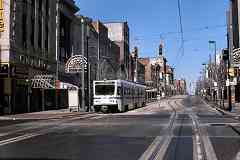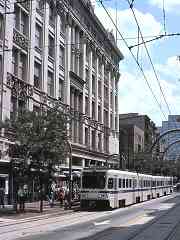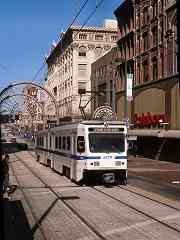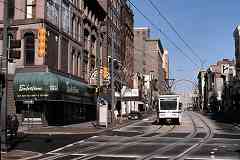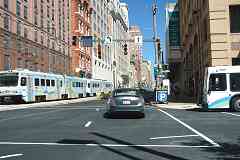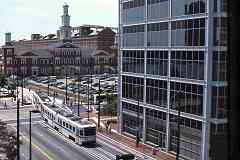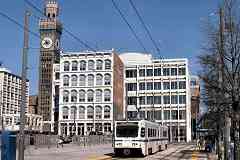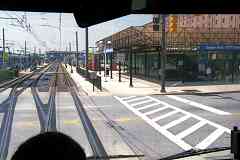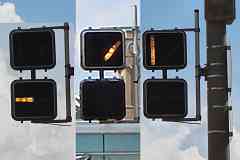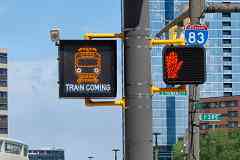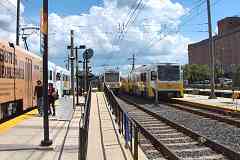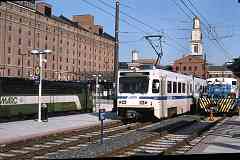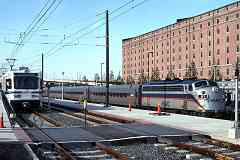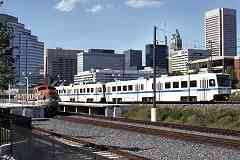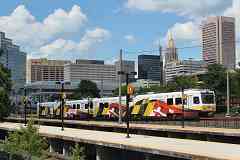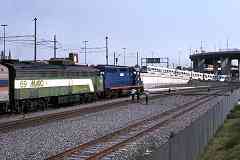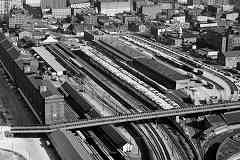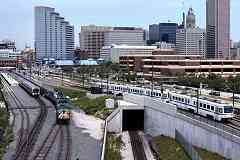|
... to this in about 20 years.
The reimagining of Camden from tired rail yard into a sports complex,
with road and rail access into a revitalized downtown, was a major success
story for Baltimore, a city that can use every such story it can get.
Pictured here are Oriole game "baseball special" trains operated by MARC
and lighr rail. It's for sporting events that light rail is more likely
to run the otherwise uncommon three-car sets, as seen here. The black
square near center is the Howard Street Tunnel's south portal, which
during the reimagining was relocated south a bit to create room for
light rail above.
Special thanks to Herb Harwood who contributed over 100 light rail photos
to this tour, and supplied interesting history details. Via decades of
study and photography, he has assembled an amazing storehouse of rail
history knowledge, and most graciously shares it. If you like the
content at this site, get one or more of Herb's books; all are
meticulously-researched, wonderfully-written, lavishly-illustrated
must-reads in this field.
Change for: Baltimore Belt Line tour at this site
| 